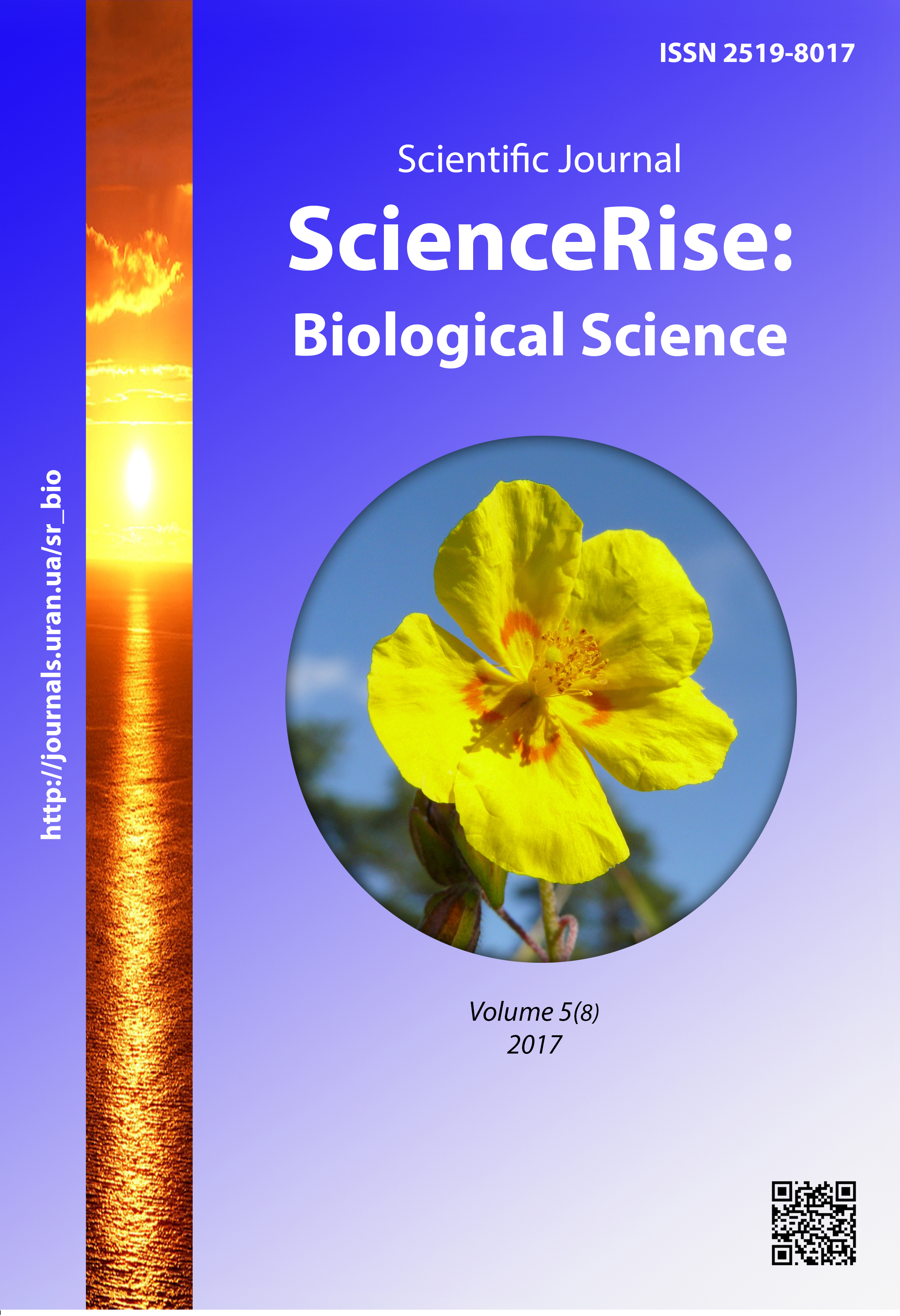Changing of dynamic response of the active muscle soleus in conditions of its ischemization in alcoholic rats when C60 fullerene is administered
DOI:
https://doi.org/10.15587/2519-8025.2017.113599Keywords:
fullerenes, ischemia, muscles, nanostructures, contractions, prophylaxis correction, radical, alcoholization, muscle soleusAbstract
There were studied the effects of bio-compatible nanostructures С60 on mechanisms of muscle soleus contractions in alcoholized rats at their ischemic lesion for estimating the therapeutic effect of fullerene С60 on the time development of general pathogenesis in the ischemically injured muscular system.
The obtained data testify to the expressed protective effect of С60FAS on the dynamics of muscle soleus contractions in alcocholized rats at their ischemic lesion. It indicates the fact that С60FAS may be considered as promising medical means for prophylaxis and correction of the ischemically injured muscle.
The studies demonstrated that administration of С60FAS causes different therapeutic effects on different zones of the contraction process. It was demonstrated, that the use of the water solution of fullerenes in dose 1 mg/kg as a protector on dynamic characteristics of skeletal muscles is effective at initial stages of lesions that is at ischemia during 1 hour. At increasing the ischemia duration, the protective influence of the solution decreases that may be connected with irreversible lesions in skeletal muscles, caused by the synergetic effect of two pathologies
References
- Hirsch, A., Brettreich, M. (2005). Fullerenes: Chemistry and Reactions. New York: John Wiley & Sons, 440. doi: 10.1002/3527603492
- Johnston, H. J., Hutchison, G. R., Christensen, F. M., Aschberger, K., Stone, V. (2009). The Biological Mechanisms and Physicochemical Characteristics Responsible for Driving Fullerene Toxicity. Toxicological Sciences, 114 (2), 162–182. doi: 10.1093/toxsci/kfp265
- Krusic, P. J., Wasserman, E., Keizer, P. N., Morton, J. R., Preston, K. F. (1991). Radical Reactions of C60. Science, 254 (5035), 1183–1185. doi: 10.1126/science.254.5035.1183
- Scharff, P., Carta-Abelmann, L., Siegmund, C., Matyshevska, O. P., Prylutska, S. V., Koval, T. V. et. al. (2004). Effect of X-Ray and UV irradiation of the C60 fullerene aqueous solution on biological samples. Carbon, 42 (5-6), 1199–1201. doi: 10.1016/j.carbon.2003.12.055
- Gharbi, N., Pressac, M., Hadchouel, M., Szwarc, H., Wilson, S. R., Moussa, F. (2005). C60 fullerene is a powerful antioxidant in vivo with no acute or subacute toxicity. Nano Letters, 5 (12), 2578–2585. doi: 10.1021/nl051866b
- Prylutska, S. V., Grynyuk, I. I., Matyshevska, O. P., Prylutskyy, Y. I., Ritter, U., Scharff, P. (2008). Anti‐oxidant Properties of C60 Fullerenesin vitro. Fullerenes, Nanotubes and Carbon Nanostructures, 16 (5-6), 698–705. doi: 10.1080/15363830802317148
- Prilutski, Y., Durov, S., Bulavin, L., Pogorelov, V., Astashkin, Y., Yashchuk, V. (1998). Study of Structure of Colloidal Particles of Fullerenes in Water Solution. Molecular Crystals and Liquid Crystals Science and Technology, 324 (1), 65–70. doi: 10.1080/10587259808047135
- Prylutskyy, Y. I., Durov, S. S., Bulavin, L. A., Adamenko, I. I., Moroz, K. O., Geru, I. I. et. al. (2001). Structure and thermophysical properties of fullerene C60 aqueous solutions. International Journal of Thermophysics, 22 (3), 943–956. doi: 10.1023/a:1010791402990
- Lai, Y.-L., Murugan, P., Hwang, K. C. (2003). Fullerene derivative attenuates ischemia-reperfusion-induced lung injury. Life Sciences, 72 (11), 1271–1278. doi: 10.1016/s0024-3205(02)02374-3
- Lai, H.-S., Chen, W.-J., Chiang, L.-Y. (2000). Free Radical Scavenging Activity of Fullerenol on the Ischemia-reperfusion Intestine in Dogs. World Journal of Surgery, 24 (4), 450–454. doi: 10.1007/s002689910071
- Yang, D.-Y., Wang, M.-F., Chen, I.-L., Chan, Y.-C., Lee, M.-S., Cheng, F.-C. (2001). Systemic administration of a water-soluble hexasulfonated C60 (FC4S) reduces cerebral ischemia-induced infarct volume in gerbils. Neuroscience Letters, 311 (2), 121–124. doi: 10.1016/s0304-3940(01)02153-x
- Nozdrenko, D. M., Zavodovskyi, D. O., Matvienko, T. Y., Zay, S. Y., Bogutska, K. I., Prylutskyy, Y. I. et. al. (2017). C60 Fullerene as Promising Therapeutic Agent for the Prevention and Correction of Skeletal Muscle Functioning at Ischemic Injury. Nanoscale Research Letters, 12 (1), 115–120. doi: 10.1186/s11671-017-1876-4
Downloads
Published
How to Cite
Issue
Section
License
Copyright (c) 2017 Vladislav Bilobrov, Darya Vulitskaya, Alexander Nozzdenko, Svetlana Zay, Alexander Motuzyuk

This work is licensed under a Creative Commons Attribution 4.0 International License.
Our journal abides by the Creative Commons CC BY copyright rights and permissions for open access journals.
Authors, who are published in this journal, agree to the following conditions:
1. The authors reserve the right to authorship of the work and pass the first publication right of this work to the journal under the terms of a Creative Commons CC BY, which allows others to freely distribute the published research with the obligatory reference to the authors of the original work and the first publication of the work in this journal.
2. The authors have the right to conclude separate supplement agreements that relate to non-exclusive work distribution in the form in which it has been published by the journal (for example, to upload the work to the online storage of the journal or publish it as part of a monograph), provided that the reference to the first publication of the work in this journal is included.









